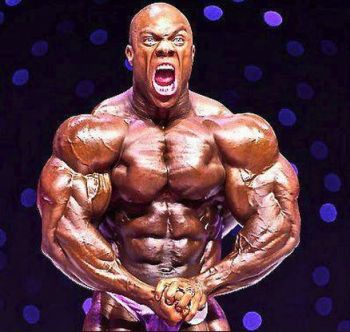In a past post we mentioned that bodybuilding is not genetic. Traditional bodybuilding uses anabolic steroids to imitate the hormone testosterone and increase protein synthesis and muscle growth.
There is, however, a recent discovery that could make you look like a bodybuilder without ever having to lift a weight.
Genetic “Natural” Bodybuilding

In 1807 a breed of cow was discovered in Belgium that had extremely large muscles and very little fat. This breed underwent linebreeding until the trait that caused them to be so muscular was a natural hereditary condition for all members of their breed.
Later genetic testing showed that a key mutation in the gene controlling myostatin had effectively shut off the myostatin protein. The Myostatin protein is used by the body to inhibit muscle growth and development, so with out it, the muscles grow much larger than normal.
It not only affected adult cows, but even the babies. The cows had double muscle tissue at birth, which means that they were literally born with twice as much muscle tissue as regular cows.
The myostatin mutation also inhibited fat storage, so these cows were bred to produce extremely lean meat, naturally.
——————————————————————————————————————-
Wendy the Bodybuilding Dog

Another discovered case of an inhibited myostatin gene was found in an English wippet named Wendy. Again, the genetic mutation in that single gene caused her not only to have twice the muscle tissue of regular dogs, but accelerated muscle growth, and decreased fat storage, earning her nicknames like Arnold Schwarzenegger and the Incredible Hulk.
Unlike testosterone, the myostatin gene malfunction does not cause increases in aggressiveness or the development of male characteristics (besides the huge muscles). Her owner claims that she does not exhibit any odd behaviors or attitudes when compared with other English wippets.
She does, however, refuse to drink tea.
——————————————————————————————————————-
Muscular Mighty Mice!

A genetic scientist at Johns Hopkins discovered the myostatin gene while studying the development of a mice embryos. They found high concentrations of myostatin being expressed in skeletal muscle, and lower concentrations in fatty tissue.
When they inhibited the myostatin gene, the mice grew 30% larger than the normal mice. As expected, they had more muscle fibers those muscles grew larger than the regular mice. They also had less fat. Sex appeal was not tested.
An even BIGGER discovery came only recently.
A Vaccine For Muscle

The research into myostatin was part of an effort to find a treatment and possible cure for Muscular Dystrophy, a condition in which the muscles weaken and degrade over time. Inhibiting myostatin was one possible treatment, but a difficult one, as it is most effective when the gene is turned off in an embryo, not in a fully developed adult.
Instead of turning off the myostatin gene in all of our DNA, what if they could find a protein that they could simply turn on to inhibit myostatin?
They found it. Follistatin. The same researchers who discovered the myostatin gene have recently released a the discovery of a new protein, follistatin, that inhibits myostatin even further.
When mice were given a follistatin vaccine that forced cells to start producing high amounts of follistatin, the same mice who had doubled their muscle tissues through myostatin inhibition now quadrupled their muscle tissue!
- Myostatin gene mutation = 2 times the muscle
- Myostatin gene mutation with follistatin vaccine = 4 times the muscle
If follistatin works in humans, not only will muscular degenerative diseases have a cure, but sports and bodybuilding would have a new “natural” steroid. If you think Barry Bonds’ head is big, just wait until Ronnie Coleman starts shooting up with follistatin.
We may finally have humans big enough to wrestle grizzly bears.
——————————————————————————————————————-
Myostatin Deficiency in Humans

There are 2 known cases of myostatin deficiency in humans. One is an unidentified German child who could apparently workout with 7 pound weights at age 5.
The other is Liam Hoekstra, whose parents became concerned when he began doing incredible physical feats at a young age. His condition has not made him muscularly bulky, but he is already an estimated 40% stronger than children his age.
If this continues, we could see strength and speed records broken by this extraordinary child. His parents currently have him enrolled in a wrestling team.
The only downside so far to his myostatin deficiency is that his appetite is out of control. He has to eat a full meal every hour. Now that’s a diet problem I can deal with.
——————————————————————————————————————-
RELATED POSTS:
5 Amazing Things About Your Genes & DNA








